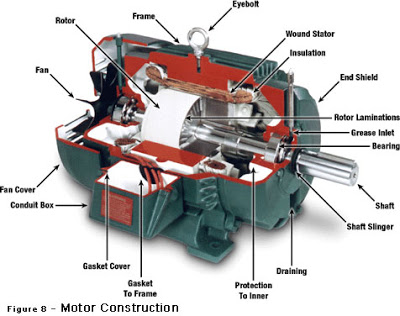

news.thomasnet.com (Green DC motor Picture)
eng-electric.blogspot.com (Right hand Picture)
DC motors operate by making an oscillating current in a
rotor. An electric power supply through the rotor goes
through a commutator making a magnetic field. DC motors use
pieces called "brushes" that put pressure on the commutator, these
brushes create friction and also can wear out eventually (DC
Motor, Wikipedia). Because of this, DC motors are
usually more costly to purchase and fix than AC motors.
However there are also some definite advantages to DC
motors. For one, they can have their power output varied by
changing the current through them, thus making them variable speed
(unlike AC motors). Second, they are more suitable for
larger applications, such as heavy machinery.
Some DC motors are of a design that eliminates brushes and uses
ball bearings instead (Improving Torque, Shabani, et. al.).
Doing this improves the lifespan of a DC motor by reducing the
wearing. It also causes less heat in the motor which may be
a requirement for certain applications. Brush-less motors
are also quieter which makes them suitable for certain
applications where brushed DC motors and AC motors may be
undesirable.

